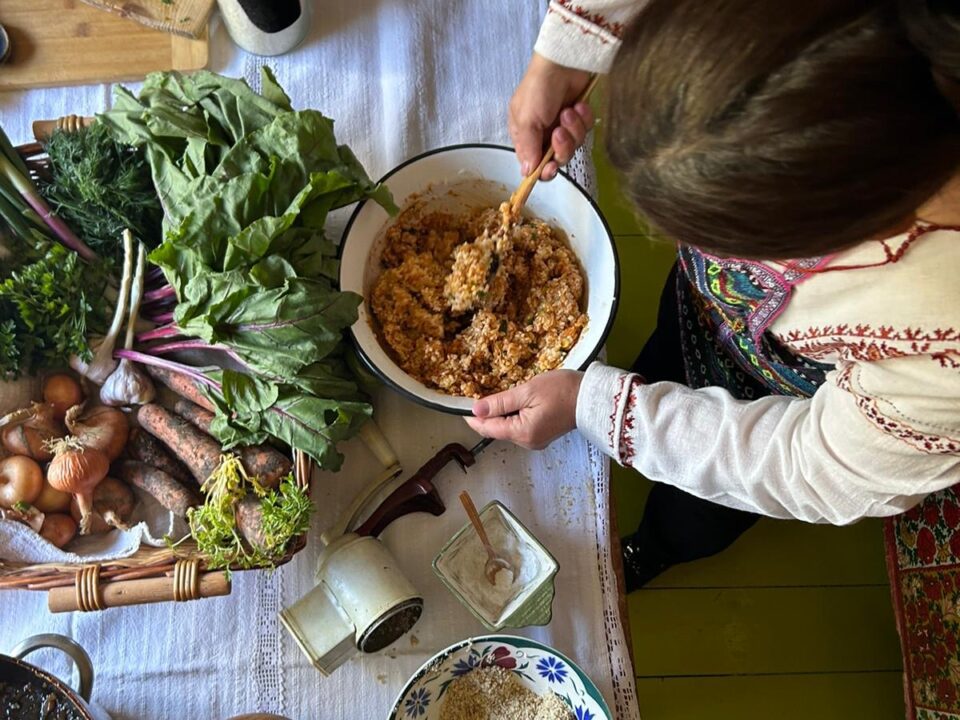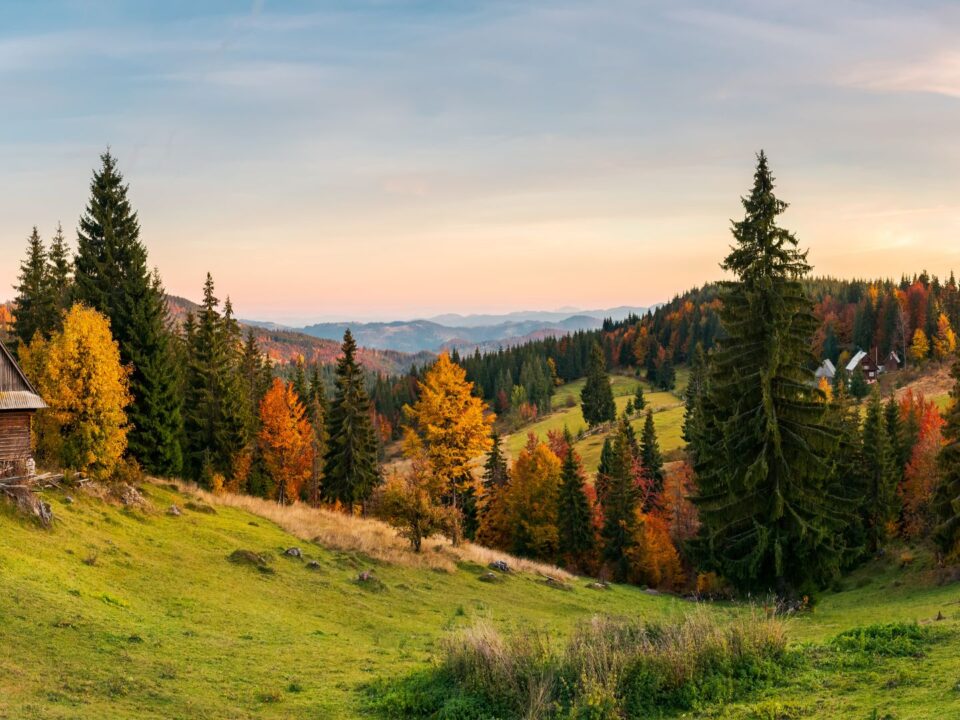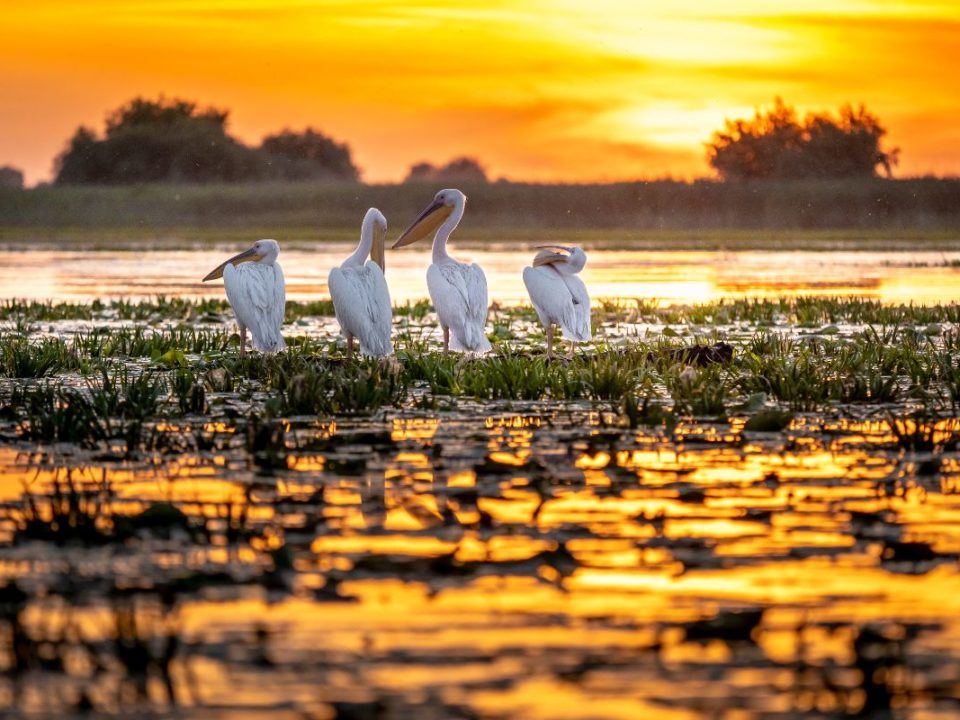
8 Beautiful Places To Visit in Sibiu For An Unforgettable Trip
September 12, 2022
One Week Itinerary In Romania For Families
September 27, 2022So what can you do in Romania? Just about anything you’d like. You can go walking, hiking, horseback riding, biking, and even sit on top of a haystack in a cart pulled by horses.
Maybe you like adventures. If you do, how about climbing in the Carpathians, or diving in underground rivers inside caves?
Perhaps culture and history are more of your thing. Romania has a wealth of museums, galleries, fortresses, castles, churches, and sometimes even whole villages that will enrich your knowledge of Romania.
Our cities are perfect for going out eating, dancing, music and film festivals, go-karting, golfing, and anything else you can think of.
One thing our guests always tell us is that they love the food in Romania – I’m sure you will too. Some can’t get enough of Romanian polenta, others loved the vegetable soups.
TRANSYLVANIA
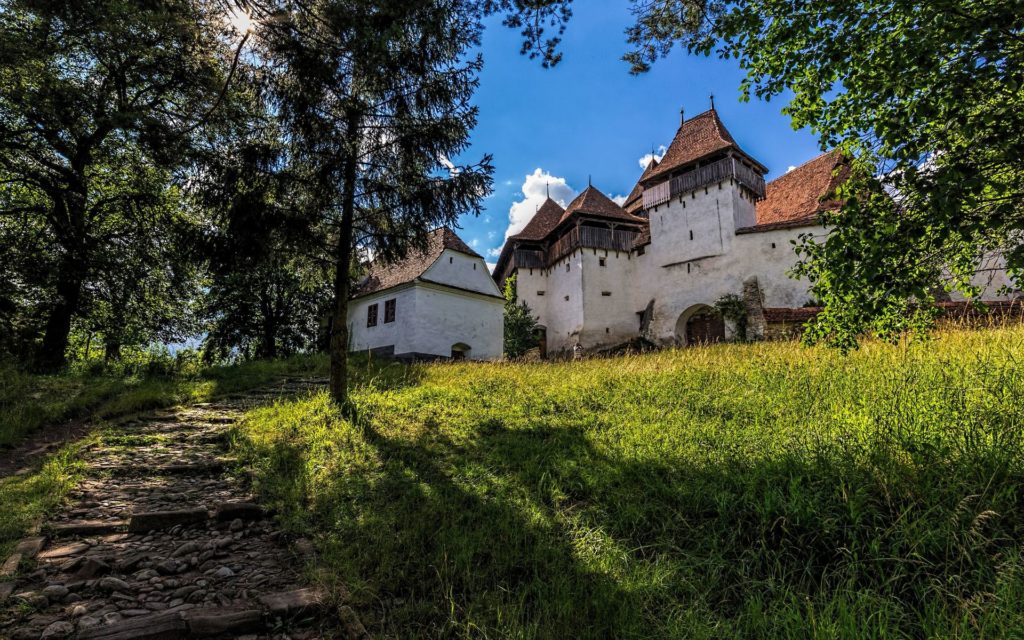
By far the best-known region in Romania to travelers from all over the world, Transylvania got its name from “silva”- the Latin word for forest, so Transylvania literally means “the land beyond the forests”.
Home to 150 well-preserved fortified churches that stand as a testament to centuries of Saxon inhabitation, Transylvania is also known for its rolling hills, dense forests, and scented meadows.
Of particular interest is the story of Dracula and his castle. While Bran Castle is definitely worth a visit, there’s hardly any proof that Vlad the Impaler, the Romanian Prince who inspired Bram Stoker’s character, ever lived there.
Visit Corvinilor Castle in Hunedoara, considered by many as one of the most beautiful medieval castles in Europe. Erected in the 15th century, this castle is known to have been the place where Vlad the Impaler spent some time imprisoned.
Alba Carolina Fortress in Alba Iulia has been recently renovated and definitely worth discovering, as you make your way towards the Apuseni Mountains, in the Western part of the Carpathians.
Turda Salt Mine dates from Roman times and is one of the most surprising and unique underground places you can visit in this part of Europe.
Visit the eye-catching towns of Sibiu, Brasov, Sighisoara, and Cluj to discover the great mix of architectural influences and let the lively atmosphere of these important economic and cultural centers of the country wash over you.
Discover some of the region’s characteristic Saxon villages such as Viscri, Malancrav, Biertan, and Miclosoara.
Venture further afield and investigate lesser-known Saxon villages such as Veseud, Cund, and Gherdeal.
Visit the Black Church in Brasov, the largest Gothic church in SE Europe.
If you love nature, go hiking, biking (everything from mountain biking to a leisurely cycle), truffle hunting, horseback riding, and walking.
Get a feel for the local culture and stay in some of the traditional guesthouses dotted over the region.
Don’t miss out on regional gastronomy. Enjoy meals prepared by local people, attend local festivals, and shop for produce at the local markets.
Hike in the Carpathians and enjoy the local flora and fauna. Get to know the indigenous plants and track the wildlife.
If you’re into caves, head west towards the Apuseni Mountains, the border between Crisana and Transylvania.
This region is home to more than 1500 caves, some dating back roughly 3000 years, such as Scarisoara, containing the largest underground glacier in Romania.
BUCOVINA
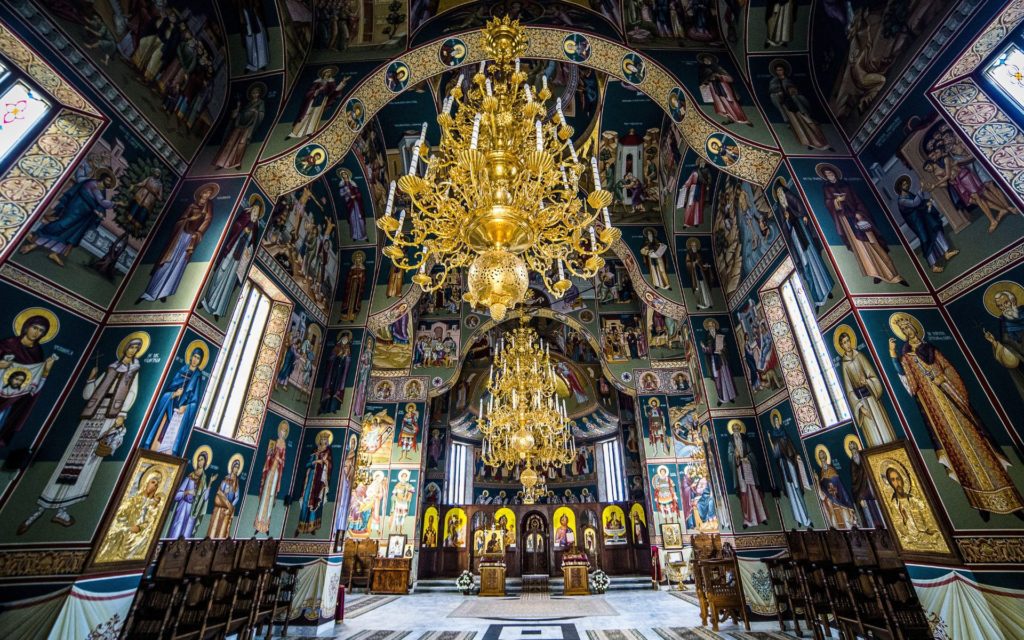
Even though Bucovina is one of the smallest regions in Romania, it’s not easy to forget once visited.
Located in the northeast part of the country, across the mountains from Maramures, the 10,500 square-kilometer area is covered with beautiful villages, lovely groves of beech trees, and, of course, its uniquely painted monasteries.
If you are looking for some peaceful days filled with hospitable locals, good food, and time to chill out and reflect, Bucovina is the place to be.
The painted monasteries are a must while traveling here. Masterpieces inspired by Byzantine art, tell visual stories about the past, often showing important moments from the history of Christianity or tales from the Bible. Eight of them are under UNESCO protection.
Painting eggs for Easter is taken very seriously in Bucovina. Every year Easter eggs are turned into works of art by skilled craftspeople from this area. You can see these masterpieces while visiting the egg museums or attend an egg-painting workshop to challenge your skills.
Besides egg painting, the artists from Bucovina also master the art of molding clay – black pottery being the most famous, glass painting, traditional mask crafting, or carpet weaving. Pay them a visit and learn more about these ancient traditions.
If you are a nature lover, you definitely have to take a walk in Calimani National Park, which contains the biggest volcanic crater in the country. For more adventure, you can try hiking, mountain biking, or horseback riding.
Take a driving tour and stop in the village-museum Ciocanesti, to see the beautifully painted houses.
You can’t really know a place without meeting its people and trying their food. So you definitely have to taste the local cuisine, complemented with homemade schnapps.
MARAMURES
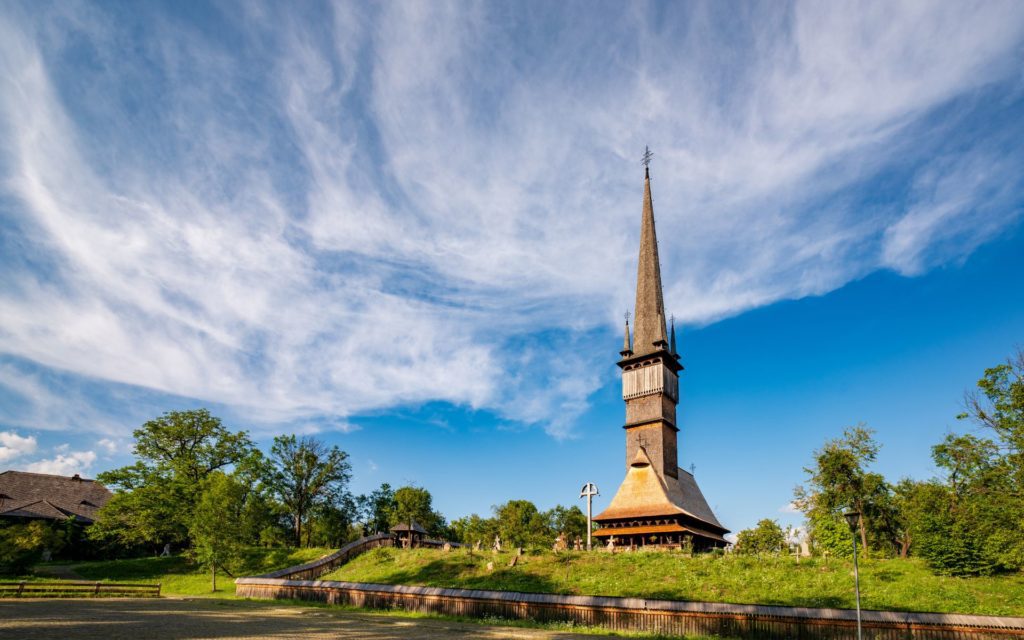
Maramures is considered by many the heart and soul of rural Romania. It’s like an open-air museum, where everything is frozen in time. The villages, the traditions, and even the people’s way of life are beautifully preserved and have been followed for generations.
Maramures is the place to be if you are looking for art, culture, traditions, and spectacular landscapes.
You should definitely put the wooden churches of Maramures on your list. They are an outstanding example of wooden architecture, with impressive towers that rise up to 78 meters high. Eight of them are now under UNESCO protection.
The Merry Cemetery. Yes, you read that right. The village of Sapanta is well-known for its unique cemetery, where the crosses are beautifully colored, and share tales from the life of the deceased through funny, satirical poems.
We know that it is not always appropriate on hallowed ground, but here laughter is permitted and even encouraged.
Once you arrive in Sighetu Marmatiei, make sure you visit the Memorial to the Victims of Communism and of the Resistance. The museum, built in the old prison building, presents the chronology of the totalitarian system in Communist Romania and each cell has been transformed to show a particular moment from those dark times.
Regardless of the season, the landscapes in Maramures are always stunning. While wandering around you might want to stop at the 97-meter high Horses Waterfall, enjoy some hikes in Rodnei Mountains National Park, or just drive through the beautiful traditional villages.
Take a ride on the steam train! Mocanita from Vaser Valley is among the few steam trains still working today.
DOBROGEA
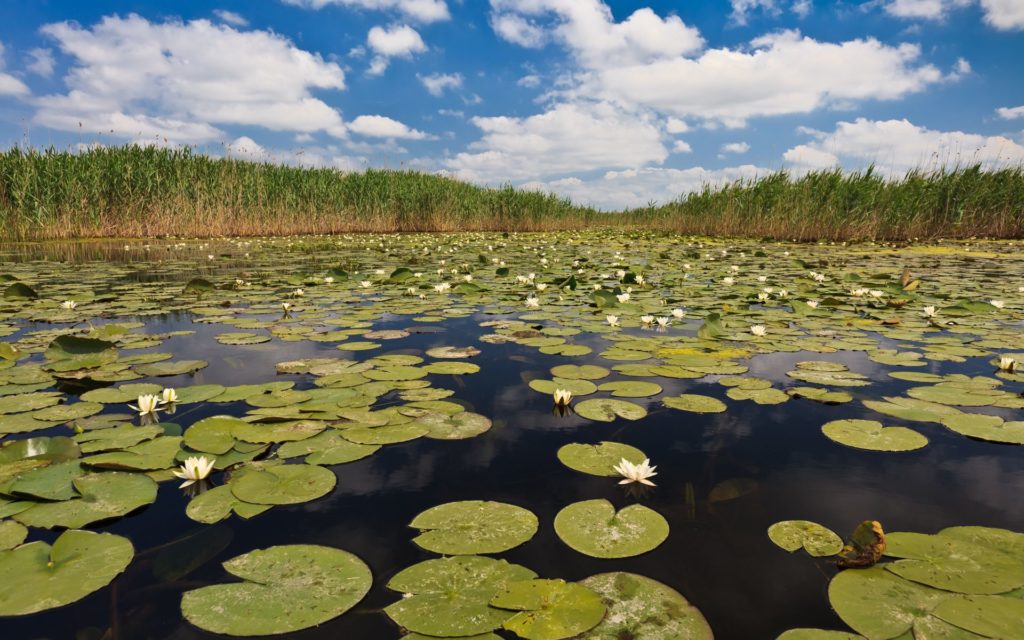
Dobrogea is the most ethnically diverse region in Romania. Here you can find a fascinating mix of cultures in addition to the majority Romanian population, such as Ukrainians, Tartars, Turks, and the distinctive and rare ethnic community of the Lipovans, who arrived in Romania in the 18th century, fleeing from religious persecution in Russia.
Dobrogea is home to the Danube Delta, one of the most spellbinding wildlife reserves in the world, the largest and best-preserved of Europe’s deltas, designated by UNESCO as a “Reservation of the Biosphere”.
All the villages in the Danube Delta show a strong Turkish influence, and you can spot Greek, Roman, and Byzantine vestiges everywhere. The roads are some of the best in Romania, with scenic landscapes rolling before your eyes every step of the way.
The people here are straightforward and welcoming, as in other parts of the country. Since living conditions during winter are quite harsh, the Delta population is scattered among the port of Sulina, the city of Tulcea, and the 27 villages, with an average density of about 2 inhabitants per square kilometer.
The Danube Delta is a wildlife enthusiast’s heaven, as there are some 350 species of birds, 45 freshwater fish, and 1,700 plants.
Birdwatching and bird photography are very common here, as this is a perfect breeding ground for all kinds of exotic birds, some of which come all the way from Asia and Africa.
Besides birds, there’s also a rich ecosystem of wild animals: foxes, deer, and a few wild boar are a common sight in the Delta, although we’ve even heard stories about wildcats and wolves.
Rent a boat and explore the watery labyrinth of lagoons, rivers, canals, and lakes.
Explore traditional fishing villages. Each place has its own magic and its own particular attractions.
From Chilia Veche in the North, right next to the Ukrainian border, to the Sulina channel in the middle of the region, and then to the remote Sfantu Gheorghe in the South, there are a handful of traditional guesthouses or small resorts where you can rest and reinvigorate yourself after a day of boating, horse-riding, cycling, wildlife watching, and wine tasting.
Enjoy the solitude on some amazing deserted beaches on the Black Sea, like Vadu, Corbu, or Sfântu Gheorghe.
Visit the ruins of the Greek fortress of Histria, and the Ottoman one in Enisala, the most important of the over 20 still-standing fortresses.
Climb the tower of the Carol I Mosque in Constanta to get an overview of the Old Centre. This part of the city is called “the peninsula”, and it houses many valuable historical monuments, from the local naval tradition.
Constanta is built on the ruins of the ancient city of Tomis, so make sure to visit its underground galleries, the Roman amphitheater, the basilica, crypt, and aqueducts.
Try the savory local cuisine, especially if you like fish. The most popular dishes in the Delta are the Fisherman’s Soup and the Saramura.
Wine tastings. There are several wineries in the Delta that organize wine tastings for travelers. Here you can witness the production process, listen to fascinating stories, and even get the chance to go into the vineyards and pick the indigenous grapes yourself.
The best-known winery in Romania is Murfatlar, which produces medium-dry and sweet wines, both white and red.
MUNTENIA
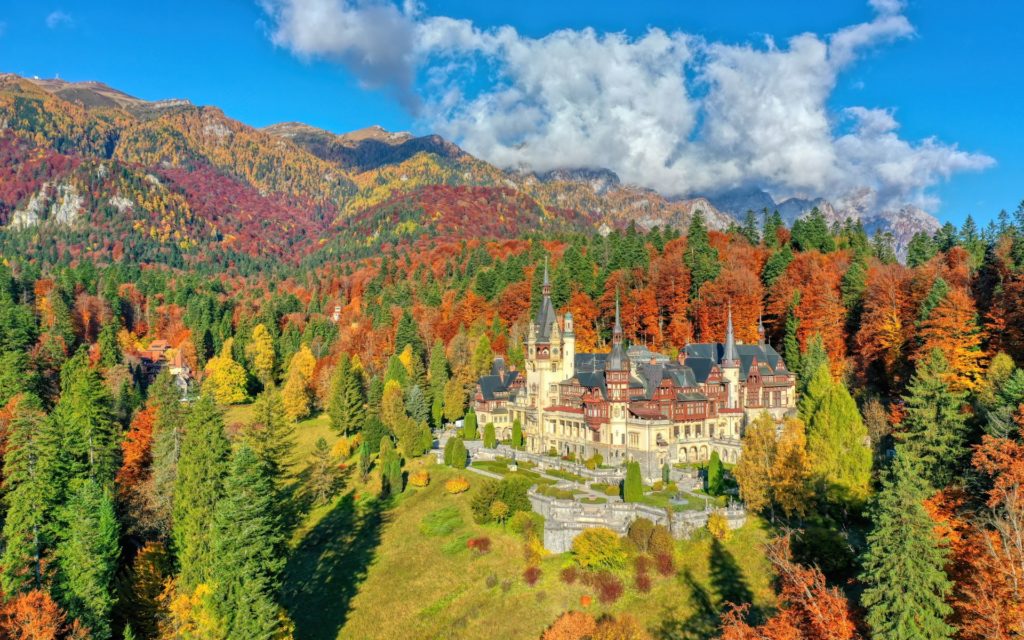
Muntenia, or Greater Wallachia as it is known in English, is located in the Southern part of Romania and is home to some of the most famous Romanian landmarks, including Peles Castle, the Transfagarasan Road, and Bucharest, to name just a few.
Whether you’d like to discover the cultural sites of Romania’s capital, go hiking in the mountains, or visit century-old monasteries or royal residences, Muntenia doesn’t disappoint.
Visit Peles Castle in Sinaia, the summer residence of the Romanian Royal family. Built at the end of the 19th century in a beautiful valley shielded by the Carpathians, it’s one of the best-preserved royal castles in Europe.
In the Prahova Valley, there are the popular ski resorts of Sinaia, Busteni, and Predeal, in the Carpathian Mountains. These same resorts are starting points for some picturesque hiking trails in the Bucegi Natural Park from early May until late October.
Drive along the Transfagarasan road. The presenters from Top Gear, the popular UK driving show named it “the best road in the world”, and once you see the view, you’ll agree on the spot.
Visit Poenari Fortress and the Princely Court, the real residences of Vlad the Impaler.
Visit the beautiful Orthodox monastery at Curtea de Arges, built in the 16th century.
The Mud Volcanoes and the Living Fires are natural wonders that offer spectacular views, even from a distance.
Explore the Ialomitei Cave, a place full of legends and local history. At the entrance of the cave, close to the springs of the Ialomita river, there is a beautiful Orthodox monastic dwelling you can also visit.
Dealu Mare is considered to be Romania’s Tuscany, as it’s one of the most famous and oldest wine regions in the country. Known especially for their traditional reds, some of the best wineries include Lacerta, Rotenberg, Davino, Vitis Metamorfosis, Vinarte, and Ceptura.
OLTENIA
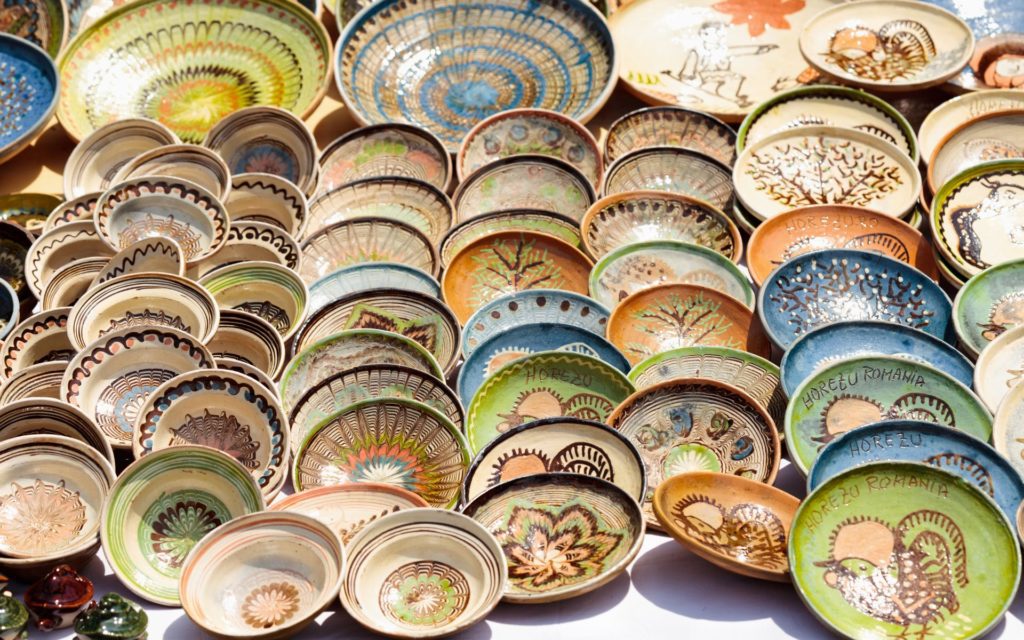
Also known as Lesser Wallachia, Oltenia is famous for its geographical diversity, from the Carpathian Mountains in the North to the plains washed by the Danube river in the South. Although it’s not so popular amongst tourists as the neighboring Transylvania or Muntenia, Oltenia isn’t short of either natural or cultural attractions.
Follow Brancusi’s art trail. One of the main delights of the region is the “Constantin Brancusi” National Cultural Complex, in Targu Jiu. Situated outdoors, it comprises three sculptures by the world-renowned Romanian artist, one of the most influential modernist sculptors of the 20th century.
In Horezu, visit the Brancovan-style monastery, included on the list of UNESCO World Heritage Sites. You could also visit the pottery workshop center here, famous for its unique type of traditional handmade ceramics, also inscribed on UNESCO Intangible Cultural Heritage Lists.
Visit Cozia Monastery, built in the 14th century and nestled in a charming forest, deep in an idyllic natural setting.
Explore the million-year-old Polovragi Cave. At over 10 kilometers in length, it’s one of Europe’s longest. Polovragi is also a place of mystery and legend and is considered to be home to the ancient Dacians’ god, Zamolxes.
The region is also rich in wineries, and the most notable ones are Dragasani, Avincis, Bauer, and Stirbey. Make sure you visit them all and find your favorite tipple.
BANAT

The mix of cultures and ethnic diversity is one of Banat’s greatest points of interest. The region has been influenced by Hungary and Serbia, as well as Romania, making for a fascinating history.
Just three hours from Budapest and five from Vienna, Banat’s capital of Timisoara is one of the closest places in the country to the Western part of Europe. As a result, the region can be easily discovered as part of a cruise on the Danube or a trip around Central Europe, for example.
Banat is a largely flat agricultural region, but don’t let that put you off. Some terrific wineries, thermal resorts, and some smaller mountain ranges, plus the Danube Clisura gorge and pass can all be found in this surprising corner of Romania.
Take time to explore the Nera Gorge National Park, home to, among others Bigar Waterfall, perennially nominated among the world’s most unique waterfalls. Go rafting, climbing, hiking, and take a hot air balloon excursion.
Enjoy wines from Minis – one of the region’s oldest wineries, dating back from the 19th century – or from Recas, Petrovaselo, and Silagiu, whose products are equally quaffable.
Although more than a little affected by the passage of the years, Baile Herculane is still worth a visit. One of the best and oldest thermal resorts in the world, you will be rewarded if you take the time to walk around. And for the caving enthusiasts, there are plenty of opportunities in the area.
Take the train from Oravita to Anina to enjoy one of the most beautiful trips by rail in southeast Europe.
Take a boat to discover the Danube as it borders Serbia.
Enjoy a weekend in Timisoara, and discover its restaurants, cafés, galleries, and parks. If you wish, take a local guide and venture on a walking tour to learn about the history of the city through centuries of change.
CRISANA
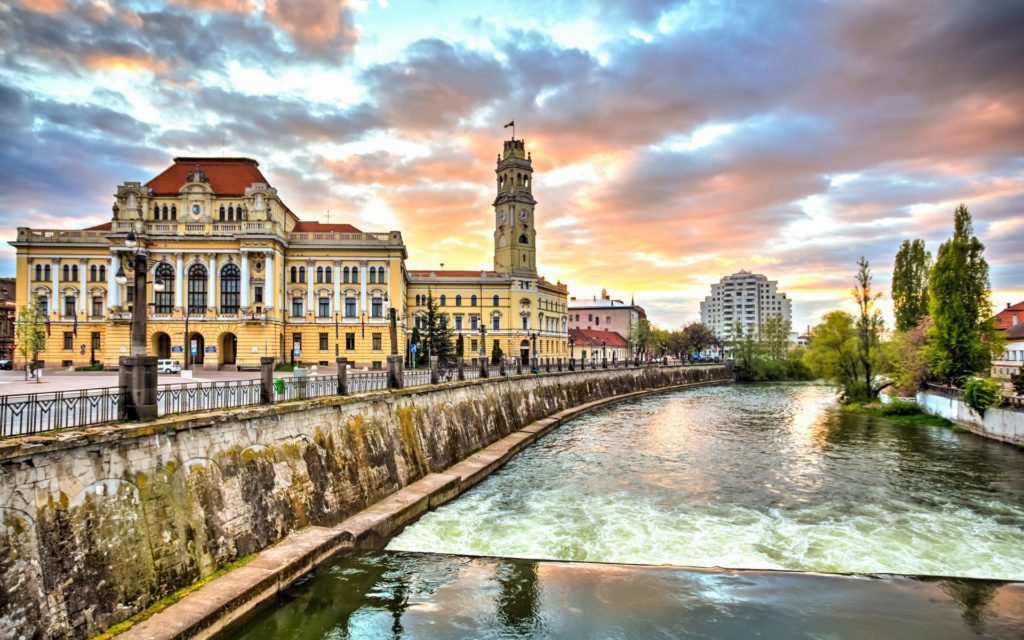
North of Banat, Crisana is another Romanian region little-known to travelers, but certainly worth exploring.
With its capital in Oradea, Crisana borders Transylvania, sharing with it the Apuseni Mountains. The Oradea fortress was built at the end of the 16th century by Italian architects and it remains one of the most beautiful of its kind in Central and Eastern Europe.
The truly magnificent parts of the region reside in mountainous areas. Caves, glaciers, waterfalls, scenic hiking routes, and sleepy villages, with houses, spread among mountain slopes; Crisana has it all, and more.
Walk around Oradea and learn about its history and culturally diverse population.
Meet a local chef and have a meal prepared in the hills between Oradea and Cluj.
Go hiking and explore some of the many caves in the Apuseni National Park. Its Alpine plants offer a splendid experience for anyone interested in the beauty of nature.
Venture into the Galbenei Gorge for days of adventure on the river and the surrounding canyon.
Discover the Ponor Fortress, the largest karst complex in Romania, and a spectacular area for explorers.
Although just partially in Crisana, do visit Arad with its Viennese-style center and the beautiful park by the Mures river.
Attend local markets, fairs, and festivals throughout the area.
If possible, travel in the off-season to learn about local traditions and the pastimes people have during the short, cold days of winter.
MOLDAVIA
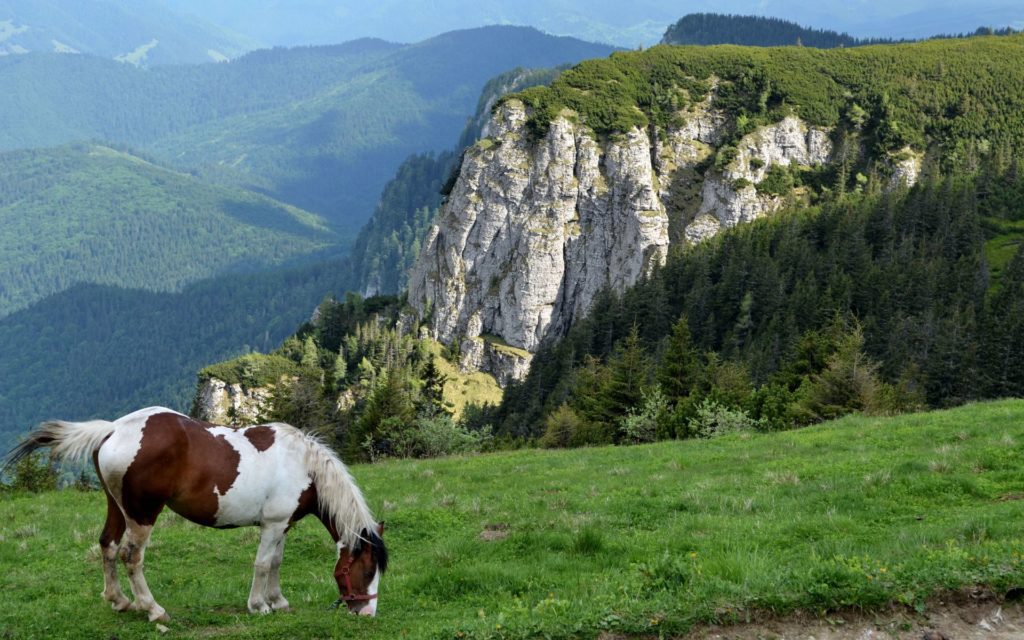
Moldova (known as Moldavia in English) is yet again another region that beautifully combines authentic folklore, astonishing natural beauty, and rich history. Here you can find centuries-old churches and monasteries, museums, old fortresses, and natural parks, perfect for hiking, trekking, or watching wildlife.
Iasi, the cultural capital of Moldova, is one of the oldest and most beautiful cities in Romania. The first Romanian newspaper was published here, and the first Romanian university was established in Iasi.
Moldavia is well known for its well-preserved New Year’s traditions when the participants dress up as animals such as bears, goats, horses, and stags, or don masks representing village characters.
Visit Iasi, with nearly 100 Orthodox churches, all set in the Golden Plateau, and its neo-gothic Palace of Culture, housing three museums.
Around Iasi, make sure to visit the myriad of fortresses, palaces, strongholds, and manor houses from centuries gone by, including Miclăușeni, Polizu, Ruginoasa, Hermeziu, Țibănești, Popești, Bârnova, and Iași.
Thanks to its ethnic diversity, Moldavia is not only the proud home of the oldest Armenian church in Europe in Botoșani but also the oldest Synagogue in Romania, situated in Iași.
The Ceahlau Mountain was the sacred mountain of the Dacians, and as such, Romania’s Mount Olympus. A trip to Moldova is not complete without hiking through the Ceahlaul National Park, where bird enthusiasts could also observe dozens of bird species.
For centuries, Moldavia has been renowned for its vineyards and fine wines. One-third of the wine-growing area of Romania is to be found here, with a large number of native Romanian varieties. One of the most famous wineries is the Cotnari Vineyards, established in 1448.
Learn about centuries of village life at the “Nicolae Popa” Ethnographic Museum in Tarpesti, where you will discover rural traditions, folk art, and an impressive collection of masks.
Visit Agapia Monastery from Neamt County, painted by Nicolae Grigorescu, one of the founders of modern Romanian painting. Neamt region is replete with tourist attractions, both man-made and natural, ideal for culture seekers, but also for hiking and wildlife watching.
Bicaz Gorge, the passageway between Moldavia and Transylvania, is one of the most spectacular drives in the country, with its 8 kilometers of ravines and serpentines. It’s also one of the main hiking and rock climbing sites in Romania.
Galati Harbour is the biggest harbor on the Danube river, and well worth a visit.
BUCHAREST
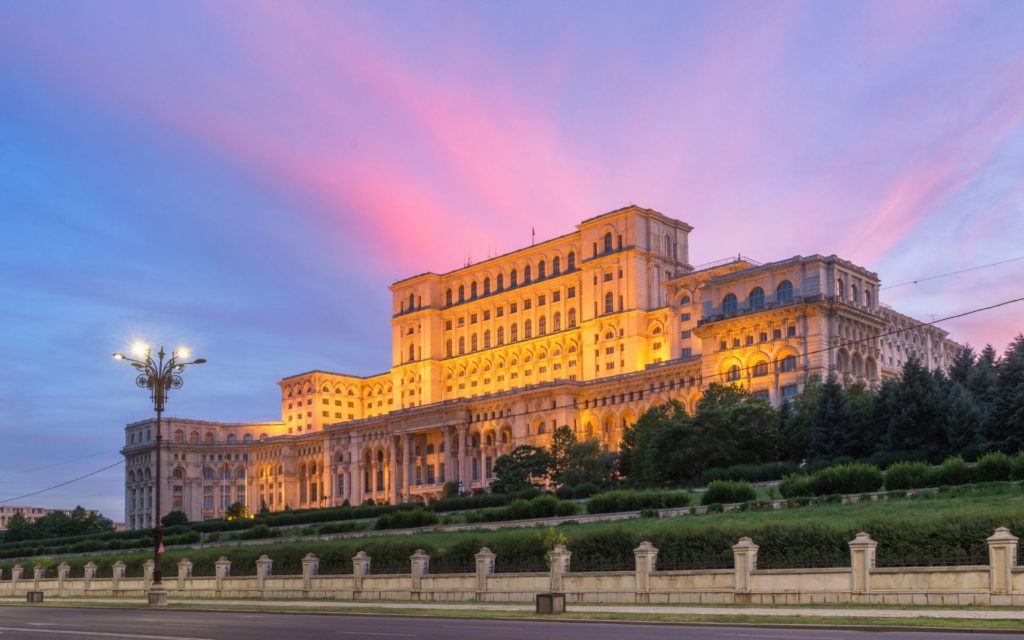
If you plan to visit our country, most probably you will take your first Romanian steps in Bucharest, the capital and the biggest city in Romania.
Also known as ‘Little Paris’, the label was coined between the two world wars, thanks to its beautiful belle époque architecture.
Today’s Bucharest is a mixture of styles and cultures. From beautiful boulevards to stroll down, to impressive museums to visit, vast parks to relax in, sophisticated restaurants to delight your palate, and modern malls to shop in, the city has it all.
No matter how you discover the city, and whatever your tastes, make sure you take enough time to soak up its unique atmosphere.
Wander the narrow streets of the Old Town and discover its charming contrasts and rich heritage, particularly the French-inspired architecture which gave this part of the city the nickname “Little Paris”.
If museums are on your must-do list, make sure you stop at the Romanian Peasant Museum, which holds a huge collection of Romanian traditional items. There’s also the Grigore Antipa Natural History Museum, with over two million artifacts, and the Village Museum, an open-air display of traditional houses, churches, and inns, from various regions of the country.
Visit the Ceausescu Mansion, the private residence of the former communist dictator Nicolae Ceausescu. You’ll get to see how he and his family lived behind closed doors, while also having the opportunity to admire a large collection of paintings, tapestries, and impressive furniture.
Even if you only drive by or are curious enough to take a tour, the Palace of Parliament is hard to miss, since it is the largest, most expensive, and heaviest administrative building in the world – according to Guinness World Records.
Take a different-themed tour to discover the city from several perspectives. Communism, Beautiful decay, Alternative, Hidden Bucharest, and Night Hunters are only a few options of walking tours that you can enjoy here.
For more adventurous experiences book a car racing or shooting session, try skydiving, or even an exhilarating air balloon flight.
Fill in the form below if you’d like us to organize a bespoke trip to Romania.

